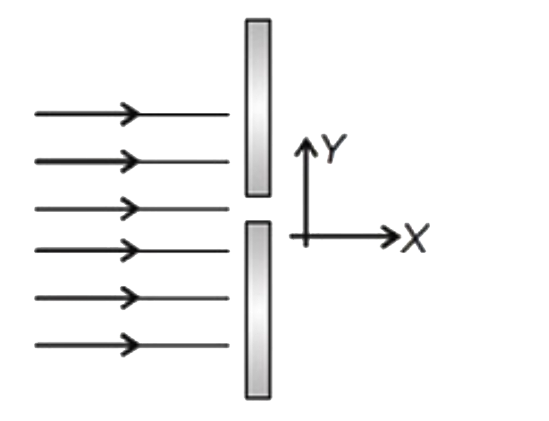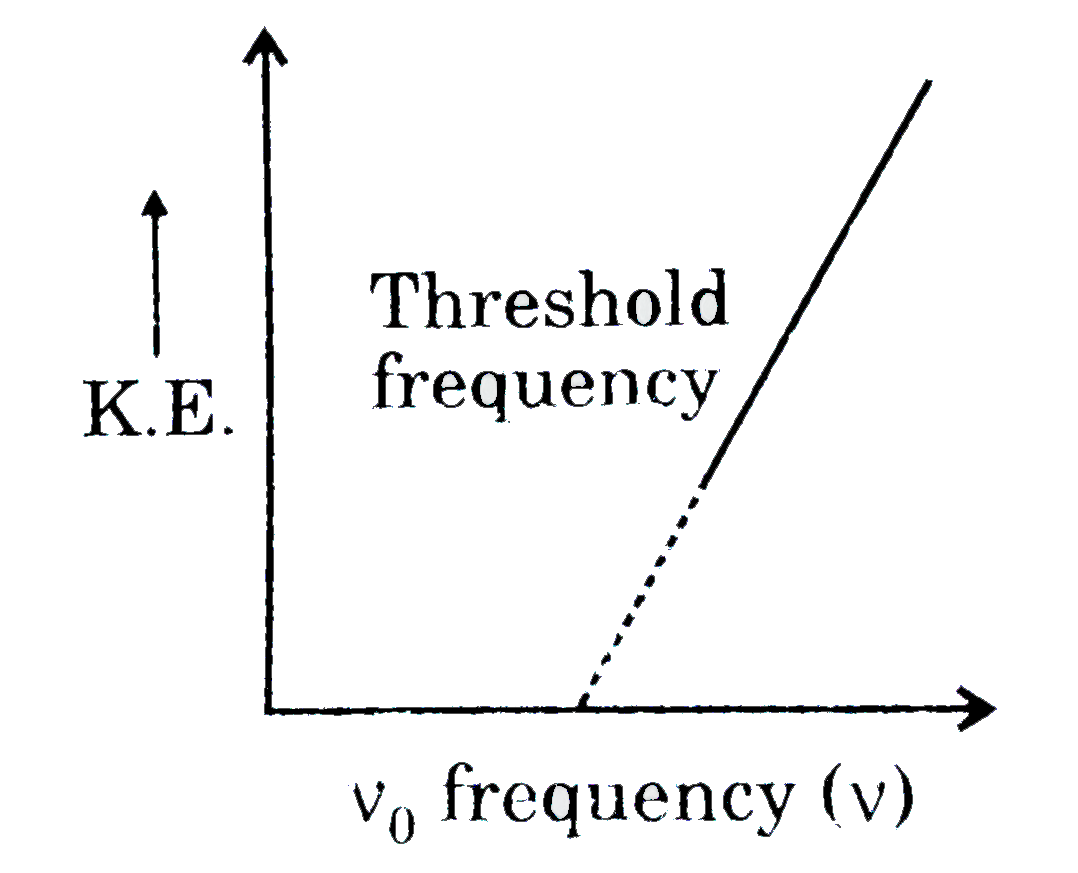Consider figure for photoemission. How would you reconcile with momentum-conservatin? Note light (photons) have momentum in a different direction than the emitted electrons.

During photoelectric cmission, the momentum of incident photon is transferred to the metal. At microscopic, level, atoms of a metal absorb the photon and its mimentum is transferred mainly to the nucleus and electrons.
The excited electron is emitted. Therefore, the conservation of momentum is to be considered as the momentum of incident photon transferred to the nucles and electrons.
Topper's Solved these Questions
- BOOK - NCERT EXEMPLAR ENGLISHCHAPTER - DUAL NATURE OF RADIATION AND MATTEREXERCISE - LONG ANSWER TYPE QUESTION5videos
DUAL NATURE OF RADIATION AND MATTER
- BOOK - NCERT EXEMPLAR ENGLISHCHAPTER - DUAL NATURE OF RADIATION AND MATTEREXERCISE - VERY SHORT ANSWER TYPE QUESTIONS5videos
DUAL NATURE OF RADIATION AND MATTER
- BOOK - NCERT EXEMPLAR ENGLISHCHAPTER - CURRENT ELECTRICITYEXERCISE - Very Short Answer Type Question.20videos
CURRENT ELECTRICITY
- BOOK - NCERT EXEMPLAR ENGLISHCHAPTER - ELECTRIC CHARGES AND FIELDEXERCISE - Long Answer Type Question6videos
ELECTRIC CHARGES AND FIELD
Similar Questions
A parallel beam of electrons , travelling in x - direction , falls on a slit of width d (see the figure) . If after passing the slit, an electron acquires momentum Py in the y direction, then for a majority of electrons passing through the slit , (h is Planck's constant)
 View Solution
View SolutionThe momentum of a photon having energy equal to the rest energy of an electron is
View SolutionA Bohr hydrogen atom at rest in free space undergoes a transition from the energy level n=2 to n=1, emitting a photon in the positive x direction. Since this photon has momentum, the atom must recoil in the negative x direction. Find the recoil velocity of the atom.
View SolutionIn an experiment on photoelectric effect, a photon is incident on an electron from one direction and the photoelectron is emitted almost in the opposite direction. Does this violate conservation of momentum ?
View SolutionStatement-1:In compton effect, the scattered photon has wavelength more than the incident photon.
Statement-2:Energy and momentum are conserved during the scattering of a photon by an electron.View SolutionConsider an excited hydrogen atom in state n moving with a velocity υ(υ<<c). It emits a photon in the direction of its motion and changes its state to a lower state m. Apply momentum and energy conservation principle to calculate the frequency v of the emitted radiation, compare this with the frequency v0 emitted if the atom were at rest.
View SolutionConsider figure from the above question and answer the questions (i) to (vi) given below.

(i) Redraw the diagram to show the direction of electron flow.
(ii) Is silver plate the anode or cathode?
(iii) what will happen it salt bridge is removed?
(iv) When will the cell stop functining?
( v) How will concentration of Zn2+ ions and Ag+ ions be affected when the cell function?
(vi) How will the concentration of Zn2+ ions and Ag+ ions be affected after the cell becomes dead?View SolutionThe electron of H-atom in the ground state is excited to a higher energy level by monuchromatic light of energy 13.22eV How many different photon are emitted when it return to the ground state?
View SolutionStatement 1: In process of photoelectric emission, all emitted electrons do not have same kinetic energy.
Statement 2: If radiation falling on photosensitive surface of a metal consists of different wavelengths, then energy acquired by electrons absorbing photons of different wavelengths shall be different.View SolutionIn the photoelectric effect the electrons are emiited instantaneously from a given metal plate when it is irradiated with radiation of frequency equal to or greater than some minimum ferquency, is called the threshold frequency.According to Planck's idea, light may be considered to be made up discrete particles called photons.Each photon carries energy equal to hv.When this photon collides with the electron of the metal, the electron acquires energy of the emitted electron is given by :
hv=K.Emaximum+PE=12mu2+PE
If the incident rediation is of threshold frequency the electron will be emitted without any kinetic energy
i.e hv0
∴12mu2=hv−hv0
A plot of kinetic energy of the emitted electron versus frequency of the incident radiation yields a straight line given as :

A laser producting monochromatic lights of different wavelenght is uesd to eject electrons from the sheet of gold having threshold frequency 6.15×1014s−1 Which of the following incident rediation will be suitable for the ejecting of electrons ?View Solution

